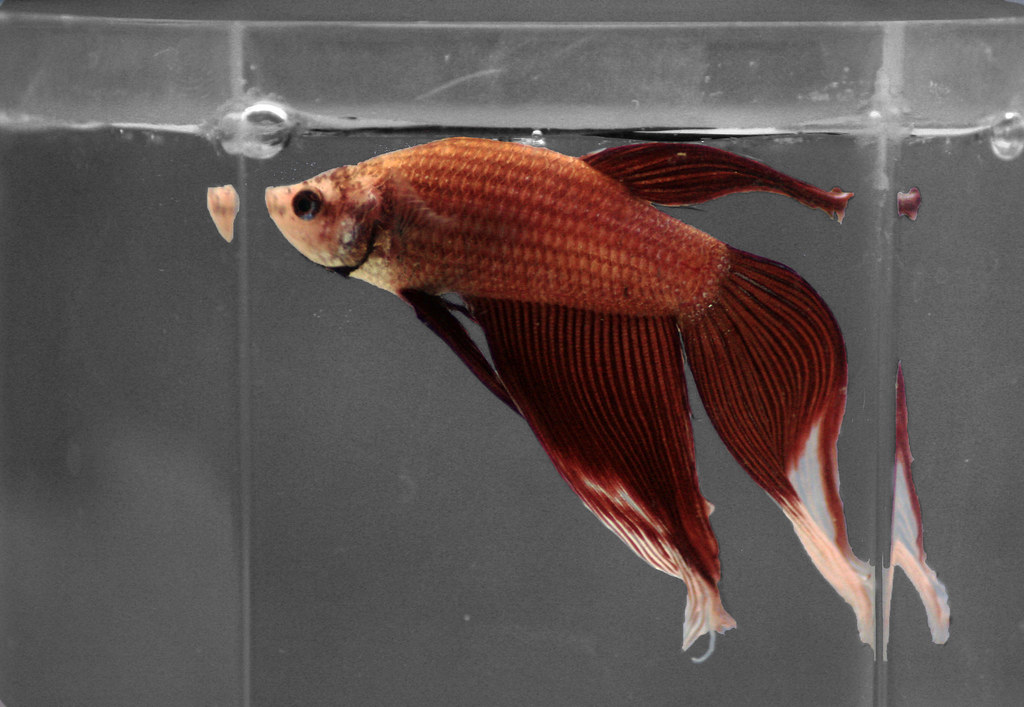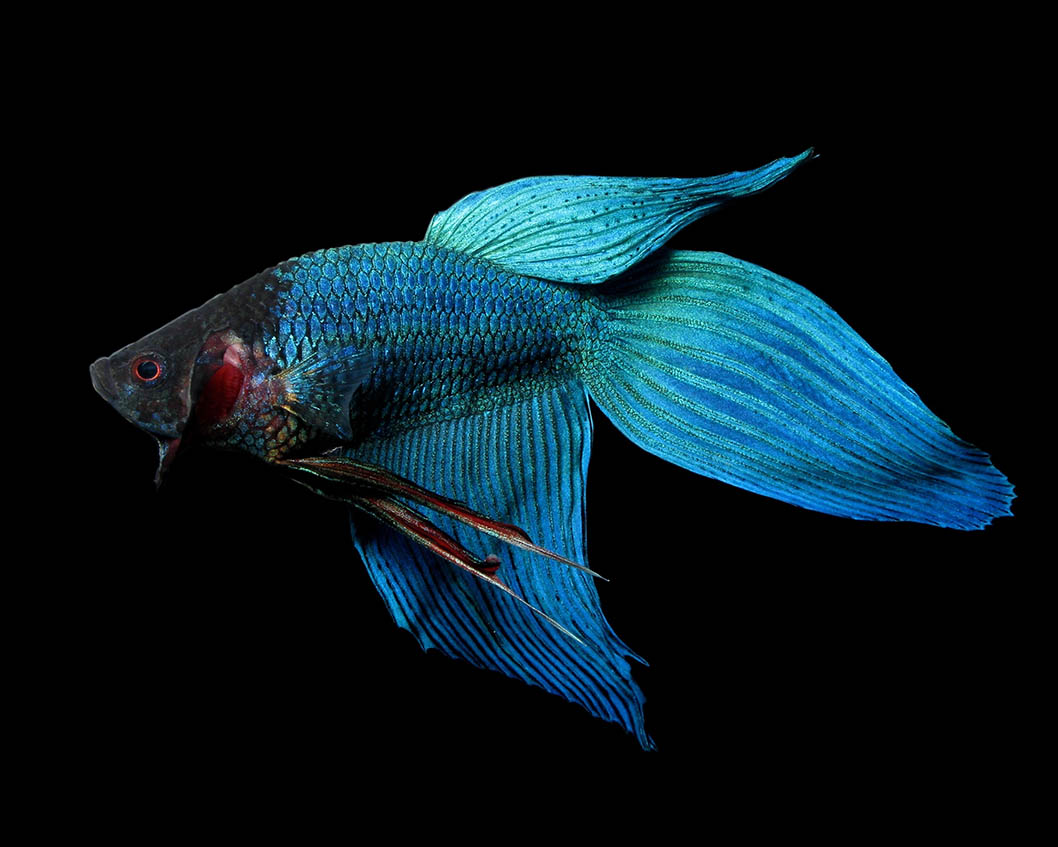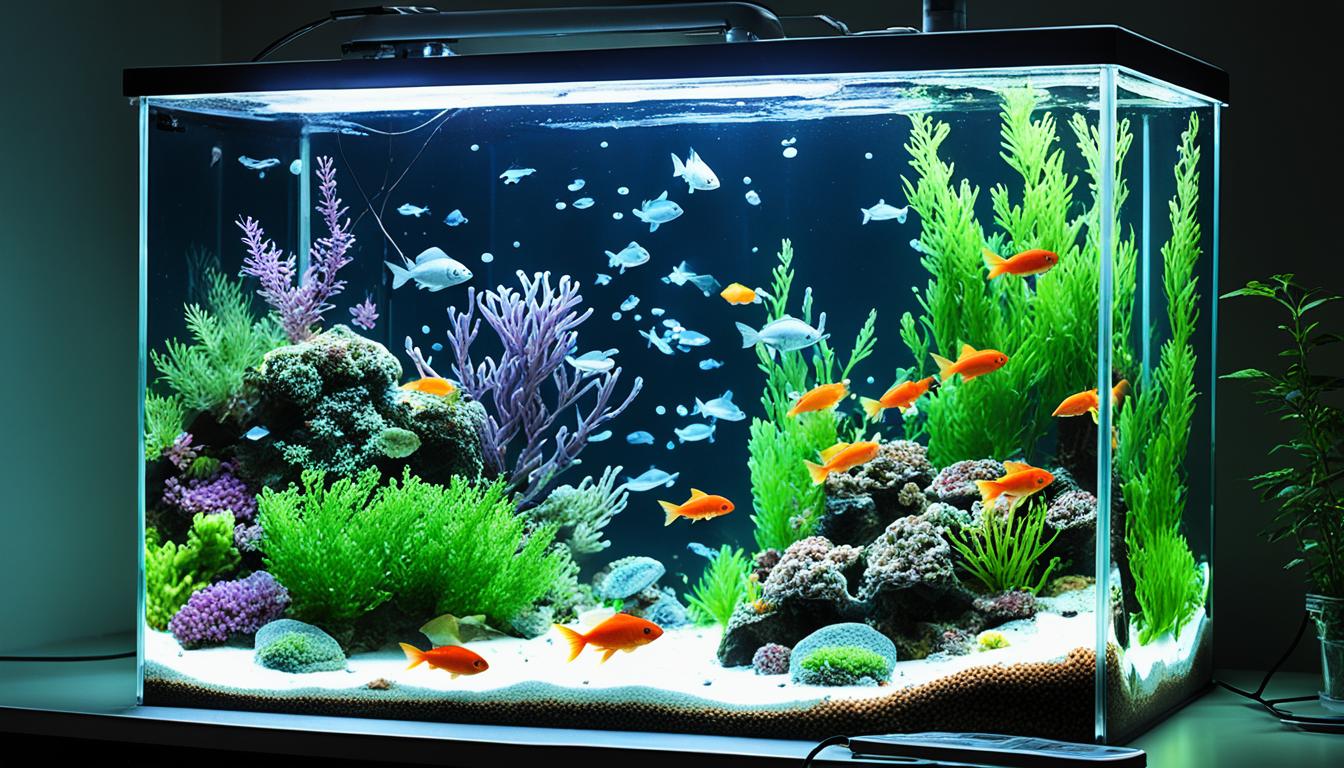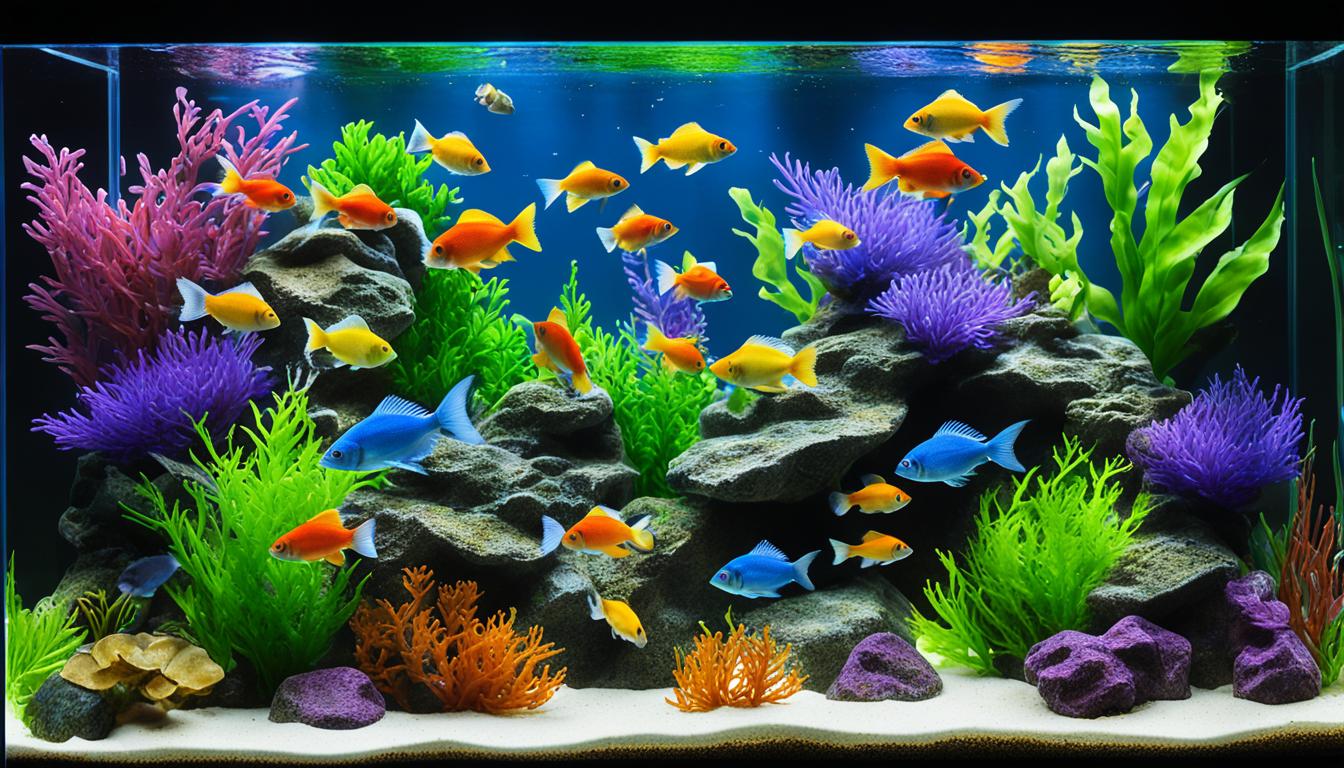Betta Veiltail Fish, commonly found in Austin, Texas, has an average lifespan of two to three years. Although bettas are known for their aggression, Veiltails tend to be more peaceful and can be compatible with other fish like guppies or kuhli.
They are widely available and are recognized by their long, flowing tails. To care for a Veiltail Betta, it is important to provide them with a suitable tank size, proper nutrition, and a stress-free environment.
Table of Contents
Physical Characteristics And Behavior
The Betta Veiltail Fish, native to Austin, Texas, is known for its striking physical characteristics and calm behavior. With an average lifespan of two to three years, these fish prefer individual housing due to their potential aggression towards other fish.
However, Veiltails are generally more docile and peaceful compared to other betta varieties, making them suitable for community tanks.
Description Of Betta Veiltail Fish’S Appearance:
- The Betta Veiltail fish, also known as Siamese Fighting Fish, are popular among fish enthusiasts due to their stunning appearance.
- They have long, flowing fins that resemble a veil, which is where their name originates from.
- Their fins can come in a variety of vibrant colors, such as red, blue, and even multicolored combinations.
- The body of a Betta Veiltail fish is sleek and elongated, with a graceful posture.
- They have a unique ability to change colors and patterns depending on their mood and environment.
- With their striking appearance, Betta Veiltail fish make for an eye-catching addition to any aquarium.
Explanation Of Their Behavior And Temperament:
- Betta Veiltail fish are known for their territorial nature and can be quite aggressive, especially towards other male bettas.
- It is essential to provide them with ample space and individual tanks to avoid any conflicts.
- Despite their aggression towards their own kind, Betta Veiltail fish can coexist with certain tank mates, such as peaceful bottom-dwelling species or small, non-aggressive fish.
- They are highly intelligent and can recognize their owners, often displaying interactive behavior.
- Betta Veiltail fish are known to be curious creatures and enjoy exploring their environment.
- They have an air-breathing organ called a labyrinth organ, which allows them to breathe oxygen from the air. As a result, they can survive in low-oxygen environments.
- It is crucial to ensure that the water conditions and temperature are suitable for Betta Veiltail fish, as they require warm water between 75-80°F (24-27°C) to thrive.
Betta Veiltail fish are not only visually stunning but also possess unique behavior traits. Their flowing fins and vibrant colors make them a popular choice among aquarium enthusiasts. However, their territorial nature and aggressive tendencies require careful consideration when selecting tank mates.
Providing them with a suitable environment and warm water conditions will ensure their health and well-being.
Setting Up The Perfect Tank
Setting up the perfect tank for your Betta Veiltail fish in Austin, Texas, is crucial for their well-being. This guide will help you understand the care requirements, tank size, and tank mates for a happy and peaceful aquatic environment.
Choosing The Right Size And Type Of Tank:
- A larger tank is recommended for Betta Veiltail Fish as they need ample space to swim and explore. A tank size of at least 5 gallons is ideal to provide a comfortable environment for the fish.
- It is important to choose a tank that is made of glass or acrylic, as these materials are durable and provide better insulation for maintaining a stable water temperature.
- Avoid small bowls or containers, as they restrict movement and can lead to poor water quality.
Setting Up The Tank With Appropriate Decor And Substrate:
- Provide hiding spots by adding plants, rocks, or caves to the tank. Silk or live plants are preferred over plastic ones, as they offer a more natural environment and do not tear the fish’s delicate fins.
- Use a fine-grain substrate, such as sand or smooth gravel, to create a soft and comfortable base for the fish. Avoid using sharp-edged substrates that can potentially damage the fish’s fins.
Discussing Ideal Water Conditions For Betta Veiltail Fish:
- Maintain a temperature between 78-80°F (25-27°C) in the tank, using a heater if necessary. This will ensure that the Betta Veiltail Fish remains active and healthy.
- Keep the pH level of the water between 6.5-7.5, as Betta Veiltail Fish thrive in slightly acidic to neutral water conditions.
- Use a water conditioner to remove chlorine and other harmful chemicals from tap water before adding it to the tank.
Providing Adequate Filtration And Lighting:
- Install a gentle filter in the tank to provide water circulation and remove debris. Betta Veiltail Fish prefer calm water, so choose a filter with adjustable flow settings or a sponge filter to prevent strong currents.
- Use a soft and warm lighting setup to mimic the natural day-night cycle for the Betta Veiltail Fish. LED lights that can be gradually dimmed or brightened are recommended.
Remember to regularly monitor the water parameters and perform routine maintenance such as water changes and tank cleaning to ensure a healthy and stress-free environment for your Betta Veiltail Fish.
Feeding And Nutrition
The feeding and nutrition of Betta Veiltail Fish is crucial for their health and well-being. With a lifespan of around two to three years, it is important to provide them with the proper diet and tank environment to ensure their longevity.
While they can be aggressive, Veiltail Bettas are typically more peaceful and can make suitable tank mates with proper care.
Understanding The Dietary Requirements Of Betta Veiltail Fish:
Betta Veiltail Fish have specific dietary needs to keep them healthy and thriving. Understanding these requirements is essential to ensure their well-being.
- Bettas are insectivores, meaning they primarily eat small insects and larvae in their natural habitat. It’s important to replicate this natural diet in captivity.
- A balanced diet should consist of a mix of high-quality pellets, flakes, and live or frozen foods. This provides a variety of nutrients essential for their growth and overall health.
- Pellets specifically formulated for Betta fish should be the main component of their diet. Look for pellets with a high protein content and minimal fillers to ensure a nutritious meal for your fish.
- Flakes can be fed occasionally to add variety to their diet. However, make sure to choose high-quality flakes specifically made for Betta fish.
- Live or frozen foods such as brine shrimp, bloodworms, daphnia, and mosquito larvae can be offered as occasional treats. These foods mimic the natural diet of Bettas and provide additional nutrients.
Offering A Balanced Diet Of Pellets, Flakes, And Live Or Frozen Foods:
To meet the dietary needs of Betta Veiltail Fish, it is crucial to offer a well-rounded and varied diet. Here’s how you can achieve that:
- Start with high-quality Betta pellets as the staple food. These pellets contain the necessary nutrients and are designed to meet the specific dietary requirements of Bettas. Feed them small portions, only as much as your Betta can consume in a couple of minutes.
- Introduce Betta flakes occasionally to give your fish some variety. Flakes can be fed in small amounts, but make sure they are specifically formulated for Betta fish.
- To mimic their natural diet, include live or frozen foods as occasional treats. Brine shrimp, bloodworms, daphnia, and mosquito larvae are excellent options. Thaw frozen foods before feeding and rinse live foods to remove any potential contaminants.
- Remember that overfeeding can lead to health issues, such as obesity and bloating. It’s crucial to adhere to a feeding schedule and practice portion control. Feed your Betta two to three small meals spread throughout the day, and adjust the amount based on their appetite and activity level.
Importance Of Feeding Schedule And Portion Control:
Developing a feeding schedule and practicing portion control is vital for the overall health and well-being of Betta Veiltail Fish. Here’s why it matters:
- Establishing a feeding schedule helps maintain a routine and prevents overfeeding. It also ensures that your Betta receives a consistent supply of nutrients throughout the day.
- Divide the daily food intake into two to three small meals. This mimics their natural feeding patterns and prevents overeating.
- Portion control is essential because Bettas have small stomachs and can easily become bloated if given excessive food. Feed them an amount they can consume within a few minutes.
- Observation is key. Monitor your Betta’s eating habits and adjust the portion sizes accordingly. If they consistently leave food uneaten, reduce the amount you’re offering to avoid waste and water contamination.
Remember, a well-balanced diet, feeding schedule, and portion control are crucial factors in ensuring the overall health and longevity of your Betta Veiltail Fish.
Tank Mates And Socializing
Betta Veiltail fish, commonly known for their beauty, can be kept with compatible tank mates. While they are generally more docile and peaceful, it’s important to avoid housing them with aggressive bettas that may disrupt the tank environment and stress out other fish.
Compatible Tank Mates For Betta Veiltail Fish:
- Neon tetras: These small, colorful fish are peaceful and make great tank mates for Betta Veiltails.
- Corydoras catfish: These bottom-dwelling fish are peaceful and help keep the tank clean by feeding on leftover food and debris.
- Ember tetras: Similar in size and temperament to neon tetras, ember tetras add a vibrant red color to the tank.
- Harlequin rasboras: These peaceful fish are known for their beautiful patterns and are compatible with Betta Veiltails.
- Cherry barbs: These active fish are known for their vibrant red color and can coexist peacefully with Betta Veiltails.
Risks And Considerations When Introducing Tank Mates:
- Aggression: Betta Veiltails can be territorial and may exhibit aggressive behavior towards other fish, especially males.
- Compatibility: Not all fish species are compatible with Betta Veiltails. Some may have conflicting temperaments or require different tank conditions.
- Tank size: It’s important to provide enough space for both the Betta Veiltail and its tank mates. Overcrowding can lead to stress and aggression.
- Tank dynamics: Introducing new fish can disrupt the existing hierarchy in the tank. It’s important to monitor the interactions and ensure all fish are getting along.
Highlighting the importance of monitoring tank dynamics:
- Keep a close eye on the behavior of all fish in the tank, especially after introducing new tank mates.
- Watch for signs of aggression, such as fin nipping or chasing, and be prepared to separate fish if necessary.
- Provide plenty of hiding places and plants to create a sense of territories and reduce stress among tank mates.
- Regularly test and maintain water quality to ensure a healthy environment for all fish.
- Remember, every fish has its own personality, so it’s essential to be observant and make adjustments as needed to maintain a harmonious tank.
Maintenance And Cleaning
The Veiltail Betta fish, commonly found in Austin, Texas, is known for its long, flowing fins. While they can be aggressive, they are usually peaceful, making them suitable tank mates. Care and maintenance for these fish include providing the appropriate tank size and avoiding housing them with aggressive bettas.
Regular water changes and tank maintenance:
- Perform weekly water changes of about 25-50% to maintain good water quality.
- Use a siphon to remove debris from the substrate to prevent buildup.
- Clean the tank walls with a non-toxic aquarium glass cleaner to maintain visibility.
- Trim and remove any dead or decaying plant matter to keep the tank clean.
Cleaning the tank equipment and removing debris:
- Clean the filter regularly as per the manufacturer’s instructions to ensure proper functioning.
- Remove any excess waste or debris caught in the filter media.
- Rinse the heater and thermometer to remove any algae or buildup.
- Wipe down the tank lid and lighting fixtures to remove any dust or grime.
Monitoring water parameters and addressing any issues:
- Test the water regularly using a reliable aquarium test kit to monitor parameters such as ammonia, nitrite, nitrate, pH, and temperature.
- If any parameters are out of range, take appropriate actions to correct them.
- Address any algae outbreaks by reducing the lighting duration or adding algae-eating snails or shrimp.
- Check for any signs of illness or stress in the fish and take necessary steps to address the issue.
Remember, maintaining a clean and healthy environment is crucial for the well-being of your Betta Veiltail fish. By following these maintenance and cleaning practices, you can ensure that your fish thrives in its tank.
Common Health Issues And Care
Betta Veiltail Fish, commonly found in Austin, Texas, are known for their docile and peaceful nature. With a lifespan of 2 to 3 years, they require proper care and should be kept in an appropriate-sized tank to ensure their well-being.
Identifying Common Health Problems In Betta Veiltail Fish:
- Fin Rot: This is a bacterial infection that causes the fins to deteriorate and can lead to other health issues if left untreated.
- Ich: Also known as White Spot Disease, this parasite causes white spots to appear on the fish’s body and fins.
- Velvet Disease: This is another parasitic infection that gives the fish a velvet-like appearance and can cause severe itching.
- Swim Bladder Disorder: A common problem in Betta Veiltail Fish, swim bladder disorder affects the fish’s ability to maintain buoyancy and swim properly.
Tips For Preventing And Treating Diseases:
- Maintain a clean tank: Regularly clean the tank and remove any uneaten food or waste to prevent the growth of bacteria and parasites.
- Provide good water quality: Keep the water parameters stable and ensure the water is properly filtered and heated to the appropriate temperature.
- Feed a balanced diet: Offer a varied diet of high-quality fish food to support the fish’s immune system and overall health.
- Quarantine new fish: Before introducing new fish to your tank, quarantine them for at least two weeks to prevent the spread of diseases.
- Use medication when necessary: If your Betta Veiltail Fish shows signs of illness, consult a veterinarian or fish expert to determine the appropriate medication for treatment.
Importance Of Quarantine And Regular Health Checks:
- Quarantine: Quarantining new fish before introducing them to your main tank helps prevent the transmission of diseases to the existing inhabitants. It allows you to observe the new fish for any signs of illness and provide necessary treatment if needed.
- Regular health checks: Regularly observing your Betta Veiltail Fish for any signs of illness or distress is crucial for early detection and intervention. This includes looking out for changes in behavior, appetite, appearance, and any physical abnormalities. Regular health checks can help prevent the spread of diseases and ensure the overall well-being of your fish.
Remember, providing proper care and attention to your Betta Veiltail Fish is essential for their health and longevity. By being proactive in preventing and treating diseases, practicing quarantine, and regularly checking their health, you can ensure a happy and healthy life for your beloved fish.
Breeding Betta Veiltail Fish
Betta Veiltail fish, commonly known as Veiltails, are peaceful and docile in nature, making them suitable tank mates. They have a lifespan of around two to three years and are a common type of Betta widely available in the fish market.
Discussing The Breeding Behavior Of Betta Veiltail Fish
Can be an exciting and rewarding experience for fish enthusiasts. Understanding the breeding behavior of these fish is crucial to ensure successful reproduction. Here are some key points to know:
- Betta Veiltail Fish are known for their unique breeding behavior. The male fish build bubble nests on the water’s surface to attract females.
- When the female is ready to mate, she will release eggs, and the male will fertilize them by wrapping his body around her and releasing milt.
- After mating, the male takes on the responsibility of caring for the eggs and fry.
Steps And Considerations For Successful Breeding
Breeding Betta Veiltail Fish requires careful planning and attention to detail. Here are some steps and considerations to follow for successful breeding:
- Select Healthy and Compatible Fish:
- Choose healthy and mature bettas for breeding.
- Make sure the male and female fish have compatible temperaments to minimize aggression.
- Set up a Breeding Tank:
- Prepare a separate breeding tank with suitable water conditions.
- Add floating plants or a bubble wrap to provide the male with a surface to build a nest.
- Introduce the Male and Female:
- Place the male and female fish in the breeding tank.
- Observe their behavior to ensure they are comfortable with each other.
- Watch for Mating Signs:
- Observe the male’s behavior, such as building a bubble nest and displaying vibrant colors.
- Look for vertical stripes on the female fish, indicating she is ready to mate.
- Monitor the Spawning Process:
- Once the female releases the eggs, the male will gather them and place them in the bubble nest.
- Remove the female to prevent her from eating the eggs or being harmed by the male’s territorial behavior.
- Caring for the fry and ensuring their survival:
Caring For The Fry And Ensuring Their Survival
Caring for the fry of Betta Veiltail Fish is crucial for their survival. Here are some important considerations:
- Maintain Water Quality:
- Regularly monitor and maintain the water temperature, pH levels, and ammonia levels in the breeding tank.
- Perform partial water changes to ensure good water quality.
- Provide Proper Nutrition:
- Feed the fry with specialized fry food or finely crushed flakes.
- Offer small live or frozen foods, such as baby brine shrimp or micro worms, to ensure optimal growth and development.
- Separate the Fry:
- As the fry grow, they will become more territorial and may start attacking each other.
- Move the fry to individual containers or separate tanks to prevent aggression and cannibalism.
- Gradually Introduce Solid Foods:
- Once the fry are large enough, gradually introduce them to crushed or powdered pellets designed for betta fish.
- Offer small amounts of food multiple times a day to prevent overfeeding.
Breeding Betta Veiltail Fish can be a fascinating and educational experience. By following these steps and considerations, you can increase your chances of successful breeding and ensure the health and well-being of the fry.

Conclusion
The Betta Veiltail Fish is a popular choice among fish enthusiasts due to its striking appearance and relatively calm demeanor. With their long, flowing tails and vibrant colors, they add beauty to any aquarium. The average lifespan of a Betta Veiltail Fish is around two to three years, making them a long-lasting pet.
It is important to note that Betta fish should generally not be housed together, as some individuals can be aggressive and stress out other fish. However, Veiltail Bettas tend to be more docile and peaceful, making them compatible tank mates for certain species like guppies and kuhli loaches.
When it comes to their care, providing them with a suitable tank size and a well-balanced diet is crucial for their overall health and well-being. Whether you are a beginner or an experienced fish keeper, the Betta Veiltail Fish is a captivating addition to any aquatic collection.
Frequently Asked Questions For Betta Veiltail Fish
How Long Does A Veiltail Betta Fish Live?
The average lifespan of a veiltail betta fish is around two to three years.
Can Veiltail Bettas Live Together?
Veiltail bettas should not be housed together due to aggression and stress levels. They can be compatible tank mates with guppies and kuhli loaches.
Are Veiltail Bettas Rare?
Veiltail bettas are not rare, they are a common type of betta fish that is widely available.
What Size Tank Does A Male Veiltail Betta Need?
A male veiltail betta needs a tank size suitable for their peaceful nature and long, flowing tail.
References
Aquarium and Tropical Fish Association (ATA)
National Aquarium Society (NAS)Ornamental Aquatic Trade Association (OATA)
Ornamental Aquatic Trade Association (OATA)
I am a passionate aquarist with over 30 years of hands-on experience in fishkeeping. My journey began at a young age, collecting fish from the wild and learning through experimentation. Specializing in tropical fish, I bring a deep understanding of the hobby to FishKeepingMadeSimple. The site provides honest, detailed reviews of essential products and accessories to help fellow enthusiasts create the best environments for their fish.














[…] and nutrition must be carefully monitored to keep your discus fish healthy and […]
[…] providing proper care for black ghost knife fish requires a certain level of expertise. But worry not, for I am here to guide you through the […]
[…] the lifespan of koi fish requires attention to nutrition, habitat maintenance, disease prevention, and stress […]
[…] Pristella Tetra is a relatively easy fish to feed and care for, making it a popular choice among aquarium enthusiasts. Providing them with a balanced diet and […]
[…] lifespan of a Coris Wrasse can range from 5 to 8 years with proper care. By providing the right environment, nutrition, and […]
[…] Betta Fish […]